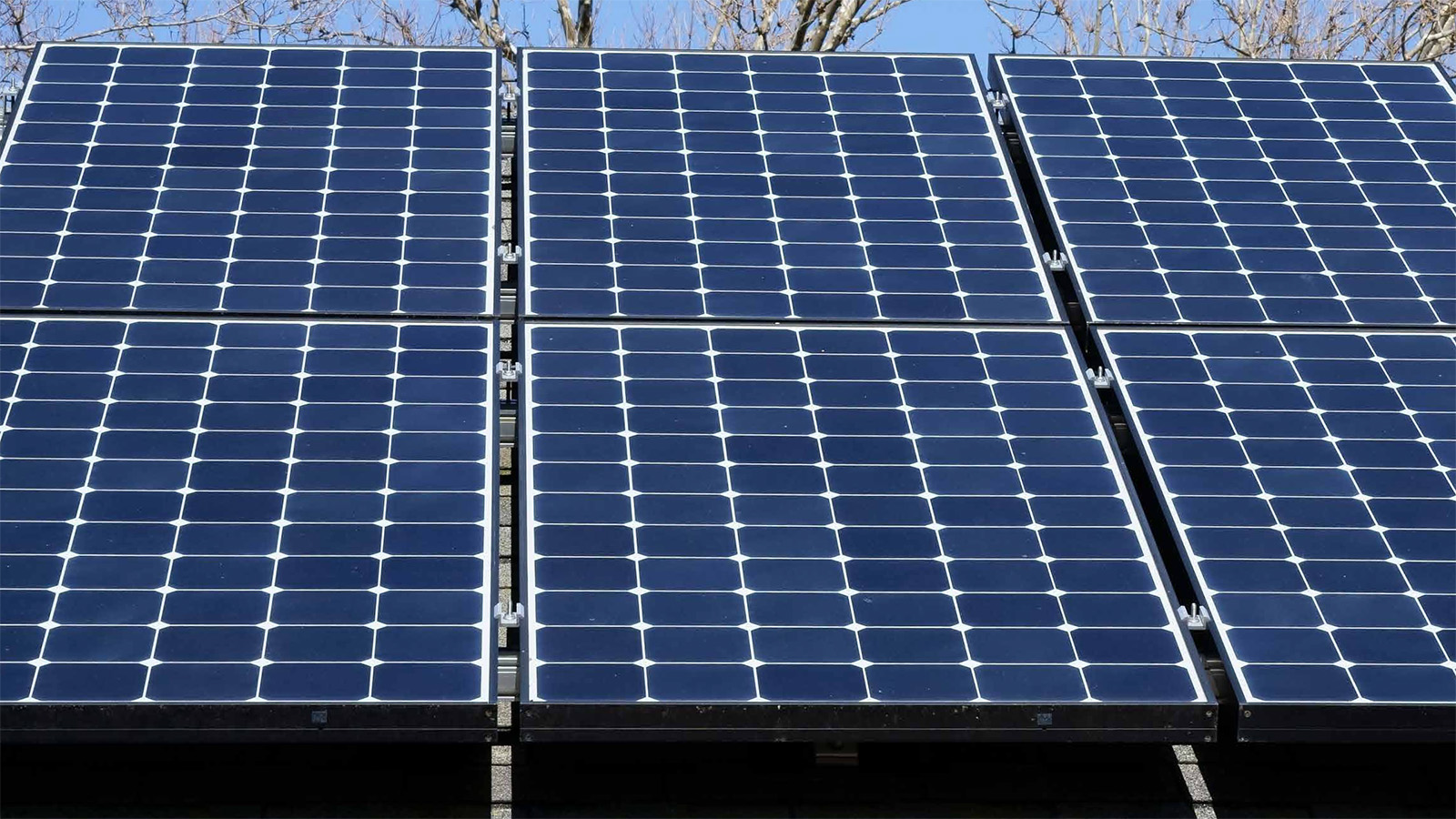
Less Shelter from the Storm: An Analysis of How Federal Budget Proposals Put New Jersey at Risk
Environment New Jersey analyzed the FY 2018 budget proposed by President Trump in the spring of 2017 and the current House and Senate appropriations bills and their impact on programs that protect communities from storm-related impacts. Overall, the Trump administration proposes a 31% ($2.6 billion) budget decrease for the Environmental Protection Agency (EPA) -- the primary agency for protecting the air we breathe and the water we drink, and reducing our exposure to toxic chemicals. The administration’s proposal also specifically proposed eliminating or cutting important clean water, coastal protection and slashing toxic waste cleanup programs. To date, the House has also proposed steep but slightly smaller cuts to the EPA of $528 million. The House spending bills also include several harmful legislative “riders,” including one that targets the Clean Water Rule, which protects flood-absorbing wetlands. The House bill also cuts important coastal protection programs and initially slashed clean water grants to states.
Environment New Jersey
With recent massive hurricanes pummeling our coasts, we need to do more to protect our communities. We need to make them less susceptible to flooding, sewage overflows and leaks from toxic waste sites, and, of course, we need to prevent even more intense global warming fueled extreme weather in the future. Unfortunately, as detailed below, pending budget proposals from the Trump administration and Congress threaten key programs that protect our communities. Rather than protecting our most vulnerable communities, budget proposals on the table in Washington, D.C. right now would threaten coastal resiliency, remove protections for flood-absorbing wetlands, neglect funding for stormwater and sewage treatment, and expose more Americans to toxic chemicals. While we do everything in our power to cut the pollution that will fuel even more extreme weather in the future, we need a budget that supports programs that can shelter us from the coming storms.
Environment New Jersey analyzed the FY 2018 budget proposed by President Trump in the spring of 2017 and the current House and Senate appropriations bills and their impact on programs that protect communities from storm-related impacts. Overall, the Trump administration proposes a 31% ($2.6 billion) budget decrease for the Environmental Protection Agency (EPA) — the primary agency for protecting the air we breathe and the water we drink, and reducing our exposure to toxic chemicals. The administration’s proposal also specifically proposed eliminating or cutting important clean water, coastal protection and slashing toxic waste cleanup programs. To date, the House has also proposed steep but slightly smaller cuts to the EPA of $528 million. The House spending bills also include several harmful legislative “riders,” including one that targets the Clean Water Rule, which protects flood-absorbing wetlands. The House bill also cuts important coastal protection programs and initially slashed clean water grants to states. Environment New Jersey is thankful for the leadership from Sen. Cory Booker and Sen. Robert Menendez and is calling on both Senators to continue to protect New Jerseyans by working to ensure full funding for important programs that protect our communities and opposing these and any other harmful proposals.
Protect Flood-Absorbing Wetlands
Floods are the most common natural disaster in the US, and scientists predict that the damage caused by floods will only increase in the years to come, to over $1 trillion per year by 2050 globally. As climate change continues to progress, extreme rain events that trigger flooding are likely to become increasingly frequent. In a warming world where extreme precipitation events will be more common, we need to protect critical natural flood barriers so that communities are safer from flooding and extreme precipitation events.
Wetlands are Nature’s Flood Control, but the House Budget Threatens their Protection
During times of heavy precipitation, wetlands act like a sponge to slow the velocity of runoff and retain excess water. In fact, an acre of wetland 1 foot deep can hold 330,000 gallons of water. In this way, wetlands reduce the danger of flooding and mitigate its worst impacts, providing water flow regulation services to communities across the U.S.
In New Jersey alone, there more than 687,000 acres of freshwater wetlands across the state, and more than 125,000 acres of these wetlands are in the 100-year flood plains (where data is available). Collectively, New Jersey’s wetlands could absorb more than 226,000 million gallons of floodwaters during an extreme weather event. In just one county alone, Gloucester, close to half of the wetlands (more than 14,000 acres) are within the 100-year flood plain. Wetlands. protect our communities from flooding, so paving over or otherwise destroying wetlands reduces the ability of a landscape to absorb rainfall from extreme precipitation events.
Wetlands are important natural flood protections, and millions of acres of wetlands are protected by the Clean Water Rule, which restored full protections to thousands of wetlands and streams across the country. However, the Trump administration and some in Congress want to repeal the Clean Water Rule, which, in addition to protecting critical wetlands, protects the drinking water of one in three Americans, including more than 4 million New Jersey residents. Now, the House budget bill has provisions that would cut the public out of the repeal process, making it easier for President Trump to dismantle this important protection.
We should be doing everything we can to protect our wetlands, nature’s best defense against flooding, but the current administration and the House budget bill would derail clean water protections and leave critical wetland ecosystems more vulnerable to pollution and degradation. We shouldn’t be reducing the number of wetlands protected by our nation’s bedrock environmental laws. Instead, we need to protect wetlands and protect our communities from flooding and extreme weather.
Make Our Coasts More Resilient
As the climate changes, our coastal communities will face more extreme weather events and increased dangers due to sea level rise. We need to help communities adapt to these coming changes by funding resiliency programs and making sure we have the best information on weather patterns and possible threats.
Coastal Resiliency is Key
With recent mega-storms showing the importance of protecting and creating more resilient coastlines, it’s disappointing to see budget proposals from the Trump administration and Congress that threaten coastal communities.
As our climate changes, our coastal communities will need to adapt to more intense storms and changing ecosystems, and state governments need to help coordinate their response. That’s why Coastal Zone Management Grants are so important–they provide a vital source of funding for states who are working with coastal communities to protect our coasts and beaches. The Trump budget would eliminate this funding, reducing the money states have to respond to the needs of coastal communities.
In New Jersey, NOAA recommended $2.61 million in Coastal Zone Management Grants to support New Jersey’s coastal management in 2017. The Trump Budget planned on eliminating this program, and it would see cuts under the House’s budget as well–they propose to cut the Coastal Zone Management grants program from $70 million to $45 million–a 35% cut.
Regional Coastal Resilience Grants provide our coastal communities with the funding they need to tackle the threat of climate change. These grants go to communities and regions that have identified gaps in their defense against storms and rising oceans, and are working together with state agencies and private organizations to address hazards and problems on their coasts. By providing funding for these grants, the Federal government is empowering local decision-makers and unlocking additional resources to protect coastal communities.
And New Jersey has felt the impact. Throughout the last three years, thanks to Regional Coastal Resilience Grants, NOAA recommended that New Jersey receive close to $1.3 million for projects that will help our coastal communities prepare for coastal storms and changes due to sea level rise as well as restore vital coastal habitat, especially critical as the state prepares to mark the 5th anniversary of Superstorm Sandy and keeps a wary eye on hurricanes off our coast.
Both the Trump administration and the House propose eliminating these grants entirely, harming the ability of New Jersey’s coastal communities to prepare themselves for future storms.
Research to help us prepare
As weather patterns and sea levels change, it will be more important than ever to have our best minds working to understand and document new changes, so policy makers and local communities can get the information they need to protect themselves.
That’s why it’s so troubling that the Trump budget proposes a $139 million cut to NOAA’s Office of Oceanic and Atmospheric Research. This office is responsible for financing cutting edge research into our changing climate through it’s competitively funded climate research, which works with universities, labs, and institutes to better understand our climate. Trump would cut this program by $31 million. The office also oversees NOAA’s weather and air chemistry research, leaving us less prepared to predict the weather and the aftereffects of air pollution.
Under the Trump budget, the federal Sea Grant program, which provides support to oceanic research institutes and ocean departments at partner universities that work to better understand our oceans and better manage our coastal resources, would be eliminated. This would halt the critical research into coastal resilience and our changing oceans conducted by these universities and institutes that will make sure we have the best tools to protect our communities from the changing climate.
Improve and Repair our Wastewater and Sewage Infrastructure
The Budget Proposals Mean More Sewage Overflows and Runoff Pollution
The Clean Water State Revolving Fund helps prevent sewage overflows and runoff pollution, both of which are exacerbated by heavy storms and rains. Adequate wastewater infrastructure plays a vital role in the health of streams, rivers, and lakes, where discharged wastewater and stormwater often end up. Wastewater infrastructure must also become more resilient to the impacts of climate change, including sea level rise, stronger and more frequent storms, flooding, and drought.
In the aftermath of Harvey, we are already seeing reports of sewage contamination in the water flooding citizen’s homes. People are getting sick, and it’s because our wastewater and sewage infrastructure wasn’t ready. Hurricane Sandy left many wastewater treatment plants on the East Coast severely damaged, further endangering public health in the wake of the storm. In response, Clean Water Revolving Fund programs provided $474 million in New York and New Jersey in 2014 for communities to reduce flood damage risks and enhance the resiliency of treatment plants to future severe weather events.
The Clean Water State Revolving Fund helps improve infrastructure resilience against extreme weather events. Since its inception in 1987, the Clean Water State Revolving Fund has provided more than $111 billion in low-interest loans and subsidies. In 2016, New Jersey received more than $54 million through this program to repair and upgrade wastewater systems, manage contaminated urban runoff, and upgrade treatment facilities. The program provides affordable financing to thousands of communities to upgrade and repair wastewater treatment plants, correct combined and sanitary sewer overflows, and protect waterbodies from nonpoint sources of pollution at a much lower cost than possible through conventional financing.
Unfortunately, this program is not adequate to the task. We are already facing a maintenance backlog in our wastewater systems, and this problem will only become more pressing. An EPA survey estimated that $271 billion is needed over the next 20 years to maintain and improve the nation’s wastewater infrastructure, including pipes that carry wastewater to treatment plants, the technology that treats the water, and methods for managing stormwater runoff. Most of that $271 billion investment is needed for projects in the next 5 years.
However, despite the desperate need across the country for these critical repairs and upgrades, the Trump administration keeps the program funded at current inadequate levels and the initial House budget actually proposed cutting funding for the Clean Water State Revolving Fund by $250 million. This cut was later reversed by an amendment on the House floor.
Instead of shortchanging a program that helps states and communities protect their waterways and become more resilient to the impacts of climate change, we should have a budget that protects and expands the Clean Water State Revolving Fund, providing funds for communities to build up their resilience.
Keep Us Safe from Toxic Wastes
The Superfund program was established in the 1980’s by the EPA in the aftermath of several environmental crises such as the Love Canal disaster in New York that forced hundreds of people to relocate from exposure to dangerous chemical pollution. The Superfund program is currently tasked with cleaning up more than 1,300 of the most toxic wastes sites in the country and responding to environmental catastrophes and natural disasters.
One in four Americans, including over 10 million children, live within 3 miles of a Superfund site. In New Jersey, there are 114 Superfund sites that are currently on the National Priority List receiving active clean-ups and warrant further investigation and long-term cleanup. Since the program was founded, over 394 sites have been cleaned up and delisted.
The Superfund program facilitates natural disaster response in two ways: First, the Superfund program provides training for thousands of first responders (firefighters, police, emergency room nurses, etc.) so they can protect the public and themselves by detecting and identifying hazardous substances. This training is an essential element of emergency and disaster response capabilities. Second, the Superfund program provides the expertise and financial resources to conduct emergency and long-term response actions that protect the public from hazardous substances.
A 2012 EPA assessment found that more than 500 Superfund sites were located in flood zones, 50 of which were based in coastal areas susceptible to sea level rise. In the last month, Hurricane Harvey flooded 13 Superfund sites and left citizens in Houston wading through toxic water. With climate change expected to intensify storms like Hurricane Harvey in the future, reinforcing the Superfund program will become more critical than ever to keep our communities safe from harmful toxins.
Unfortunately, The Trump administration has proposed to cut the Superfund program by $330 million, nearly 30% of its previous budget. However, the House has proposed to increase the level of funding for the Superfund program as a whole by $27.6 million.
Now, more than ever, is it essential that we fully fund toxic waste cleanups, not slash their budgets. Reduced funding levels for the Superfund program has already prompted the EPA to delay approximately one-third of new projects that were scheduled. These drastic funding cuts would further backlog the cleanup of these sites, posing a significant risk to to our families.
(For Appendices, please download the Word document of the analysis).
Topics
Find Out More


Solar panels: How federal tax credits can help you pay for them

Recording of Rooftop Solar on the Rise webinar

